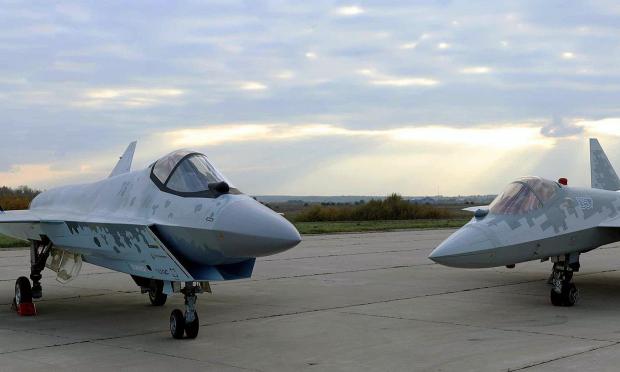It is well known that during military operations, belligerents test new weapons systems and means in order to evaluate their performance and make corresponding improvements if necessary.
Russia is known to have two advanced aircraft, the Su-57 Felon and the Su-75 Checkmate, which are considered sixth-generation fighters and have been on display.
The possible use by the Russians in Ukraine of Su-57 Felon and Su-75 Checkmate fighters
"A senior official of the Ukrainian Air Force claimed that they have not recorded any significant cases of the Russian military deploying the above advanced fighter jets on Ukrainian soil, according to an article by a reputable International Media, the highlights of which are as follows:
Major General Yuriy Ihnat, a spokesman for the Air Force of Ukraine, disclosed this information at a press conference held at the Ukraine-Ukrinform media center, according to local media reports.
He claimed that although Russian media have claimed that these aircraft have been used in military operations, the Ukrainian Air Force has not detected any deployment of these aircraft in operations against Ukraine. However, he raised the possibility that the Russian military used the Su-57 and Su-75 from a distance.
He also pointed out that the Russian Federation has several advanced aircraft and helicopters, such as Su-30SM, Su-35, Su-34, Su-25 and Ka-52, which are mainly used in frontline operations. These aircraft are technologically superior and outnumber their Ukrainian counterparts.
The difference in perception of US-Russia air operations
As a major manufacturer of warplanes, the US prioritizes advanced technologies focused on detecting and engaging adversaries before they can respond.
The focus is on the concept of "the one who sees the enemy first and the one who uses his weapons first is the one who will destroy the enemy," Ihnat added.
This approach, he said, differs from Russia's focus on demonstrating aircraft performance at air shows and instead emphasizes using cutting-edge technology to achieve a decisive advantage in battle.
Is the Su-75 currently in service with the Russian military?
Although Ihnat claimed that the Su-57 and Su-75 are sixth-generation aircraft, they are actually classified as fifth-generation aircraft. Currently, the Russian Air Force has the Su-57 fifth-generation aircraft, while the Su-75 is still in the design phase.
While Russian media have previously claimed the deployment of Su-57 fighter jets in operations targeting Ukrainian positions, there have been no reports from state media of Su-75 involvement in the ongoing conflict.
The ongoing conflict is reported to have delayed the planned timetable for the development of the Su-75, also known as the Checkmate. Also the ongoing conflict in Ukraine could make it difficult for the Russian aerospace sector to smoothly develop the Su-75 project.
As for the Su-57, Russian military officials have maintained that the Felon has operated effectively during the ongoing conflict.
In an earlier interview with state-run Rossiya-1 TV channel, Defense Minister Sergei Shoigu said the Su-57 Felon performed exceptionally well during Russia's "special military operation." Shoigu boasted about the Su-57's ability to defend against enemy air defenses and its weaponry.
The use of the Su-57 began in Syria according to the Russians
In 2018, Moscow claimed that the Su-57 was participating in the Syrian civil war on behalf of the Assad regime, marking its first combat deployment, although there is no evidence to support this claim.
Following Russia's invasion of Ukraine in February last year, there were claims in May 2022 by Russia that the Su-57 had entered combat within the first two to three weeks of the invasion. Then Russian state media, citing sources, reported that Russian Su-57s fired missiles at targets in Ukraine from safe distances.
Russia is currently believed to have fewer than 10 Su-57s in its air force, making it cautious about deploying the aircraft in combat and risking losing them. As a result, the country can avoid answering specific questions about the status of the Su-57 while still claiming its combat successes.
Many Western experts believe that with plans to acquire 76 more aircraft by 2028, Russia could continue to rely on propaganda and unverifiable claims rather than actual deployment of the Su-57 in the ongoing conflict in Ukraine.
Assessment
It raises the possibility that the Russians tested their SU-57s from safe range, i.e. out of range of Ukrainian air defenses, by firing at Ukrainian air or ground targets.
This would allow them to assess even a limited amount of its capabilities in combat conditions, without risking its downfall.
In addition, any conclusions drawn by the Russian experts would be used to build the rest of the SU-57 and the Su-75, which is probably not yet in production.



